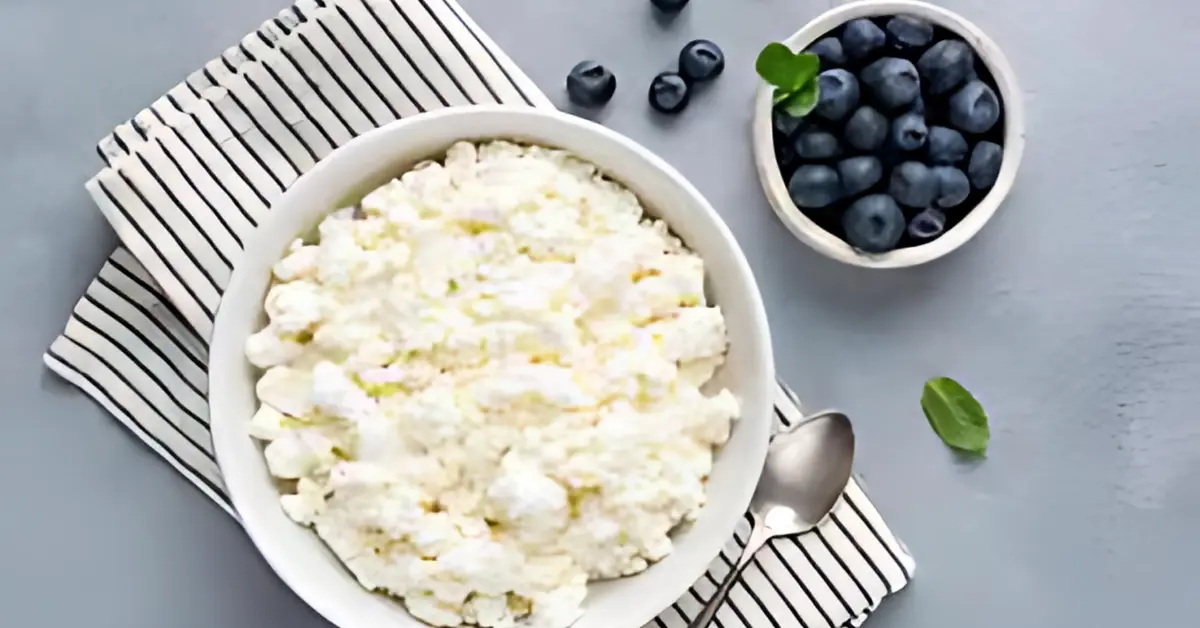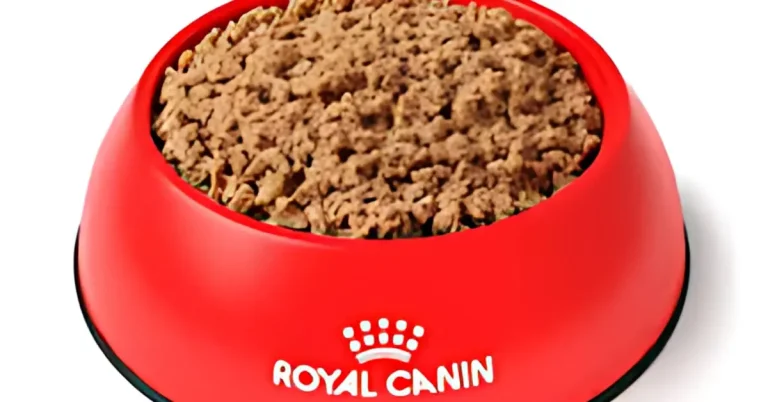Low-fat cottage cheese is one of the most underrated yet powerful foods you can add to your diet. With its mild flavor, creamy texture, and high protein content, it’s a favorite among athletes, weight watchers, and families seeking healthy meal options.
Unlike many dairy products, low-fat cottage cheese offers the perfect balance of nutrition and taste—all while being affordable and versatile. Whether you eat it plain, pair it with fruits, or use it as a cooking ingredient, it can transform everyday meals into nutrient-rich choices.
Table of Contents
ToggleKey Takeaways
- What it is: A fresh cheese made with skim or partially skimmed milk, lower in fat but high in protein.
- Nutritional profile: One cup has ~160 calories, 24–28 g protein, and only 2–3 g fat.
- Weight loss friendly: Keeps you full longer while supporting calorie control.
- Muscle builder: Rich in casein protein, making it ideal for athletes and a bedtime snack.
- Bone strength: Packed with calcium and phosphorus for healthy bones and teeth.
- Heart health: Lower in saturated fat than regular cheese, making it a heart-friendly option.
- Versatile in meals: Works in sweet (smoothies, bowls) and savory (salads, dips, pasta sauces) dishes.
- Global appeal: Enjoyed worldwide in different cuisines—Europe, the Middle East, India, and beyond.
- Best for: Weight-watchers, athletes, diabetics, the elderly, kids, and vegetarians needing protein.
What Exactly is Low-Fat Cottage Cheese?
Cottage cheese is a fresh, unripened cheese made by curdling milk and draining away most of the liquid (whey). What remains is a creamy, soft cheese with small curds.
The low-fat version is made with skim or partially skimmed milk, which reduces the fat content without compromising its nutritional benefits.
- Full-fat cottage cheese → Creamier, 4%+ fat.
- Low-fat cottage cheese → Lighter, only 1–2% fat.
This makes low-fat cottage cheese an ideal choice for people who want the benefits of cheese but with fewer calories and less fat.
A Brief History of Cottage Cheese
Cottage cheese gets its name from small rural cottages where it was first made centuries ago from leftover milk after butter churning.
- In Europe, it was a household staple, eaten with bread, vegetables, or fruit.
- In the 1970s and 80s, it gained popularity in the U.S. as a diet food, especially among fitness enthusiasts.
- Today, it’s making a comeback as part of the high-protein, low-calorie food movement.
Its ability to fit into modern diets and traditional meals explains why it has stood the test of time.
Nutrition Facts of Low-Fat Cottage Cheese
Here’s what one cup (226g) typically contains:
- Calories: 160–180
- Protein: 24–28 g
- Fat: 2–3 g
- Carbohydrates: 6 g
- Calcium: 14% of daily needs
- Phosphorus: 30% of daily needs
- Vitamin B12: 20% of daily needs
- Sodium: 600–700 mg (varies by brand)
Why It’s Nutritious
- High protein → builds and repairs muscle.
- Low fat & low calories → great for weight loss.
- Bone-friendly minerals → calcium + phosphorus support skeletal health.
- B vitamins → energy and brain function.
You get a lot of nutrition without overloading on calories—that’s why it’s considered a superfood in many diets.
Science-Backed Benefits of Low-Fat Cottage Cheese
1. Weight Loss and Appetite Control
- High protein = keeps you full longer.
- Low calories = easier to maintain a calorie deficit.
- Low energy density = eat more volume without extra calories.
A practical suggestion: Pair cottage cheese with fiber-rich foods like apples, berries, or oats for maximum satiety.
2. Muscle Growth and Recovery
- Rich in casein protein, which digests slowly and provides amino acids for hours.
- Ideal as a bedtime snack for overnight muscle repair.
- Popular in athlete meal plans because it supports lean mass development.
3. Bone Strength
- Provides calcium, phosphorus, and protein—three nutrients essential for strong bones.
- Helps prevent osteoporosis in elderly adults.
4. Heart Health
- Less saturated fat than full-fat cheeses.
- May help lower cholesterol intake.
- It can fit into a heart-friendly diet when consumed in moderation.
5. Gut Health (When Probiotic-Enriched)
- Some brands add live probiotic cultures.
- Improves digestion, immunity, and overall gut balance.
Low-Fat Cottage Cheese vs. Other Dairy Foods
| Low Fat Cottage Cheese | 80–90 | 11g | 1–2g | 3–4g | Best balance of protein + low fat |
| Greek Yogurt | 59 | 10g | 0.4g | 3–4g | Creamy, probiotic-rich |
| Cheddar Cheese | 402 | 25g | 33g | 1g | Flavor, but calorie-dense |
| Skim Milk | 35 | 3.4g | 0g | 5g | Hydration + calcium |
Key takeaway: Cottage cheese provides higher protein than yogurt, fewer calories than regular cheese, and is more filling than milk.
How to Eat Low-Fat Cottage Cheese
Best Times to Eat It
- Breakfast → for an energy kickstart.
- Post-workout → muscle recovery fuel.
- Before bed → overnight protein for muscle repair.
- Snacks → keep cravings under control.
Sweet Ways to Enjoy It
- With honey and fruit.
- Blended into smoothies.
- As a topping on pancakes or toast.
Savory Options
- Mixed into salads.
- Stirred into pasta or soups for creaminess.
- Whipped into dips and spreads.
Easy Recipes
1. Cottage Cheese Protein Pancakes
Blend oats, eggs, and cottage cheese for light, fluffy pancakes.
2. Cottage Cheese Smoothie Bowl
Blend with banana and berries, top with seeds and granola.
3. Savory Spread
Whip cottage cheese with garlic, lemon, and herbs—perfect for sandwiches.
4. Healthy Cheesecake
Replace cream cheese with cottage cheese for a lighter dessert.
5. Cottage Cheese Salad Bowl
Combine cucumbers, tomatoes, and cottage cheese for a quick lunch.
Low-Fat Cottage Cheese for Different Groups
For Athletes
- Pre-workout fuel and post-workout recovery.
- Helps build lean mass and maintain energy.
For Weight Watchers
- Low-calorie, high-satiety food.
- Can be swapped in place of higher-calorie cheeses and creams.
For Elderly Adults
- Supports bone health.
- Easy to digest compared to harder cheeses.
For Diabetics
- Low carb = doesn’t spike blood sugar.
- Protein keeps energy levels steady.
For Kids and Teens
- Great for growth and development.
- A healthier alternative to processed cheese.
How to Buy the Best Low-Fat Cottage Cheese
When shopping:
- Check sodium levels → some brands are very high.
- Look for probiotics → adds digestive benefits.
- Choose organic or grass-fed → better milk quality.
- Pick texture preference → small curd vs. large curd.
Storing Tips
- Refrigerate immediately at 40°F (4°C).
- Use within 5–7 days after opening.
- Never dip used spoons → reduces contamination.
- Freeze in small portions if needed.
Global Popularity of Cottage Cheese
- U.S. & U.K. → diet food, breakfast bowls.
- Eastern Europe → fillings for dumplings and pastries.
- India → similar to paneer (though paneer is usually full-fat).
- Middle East → eaten with olive oil, herbs, and pita.
This global versatility shows how easily it fits into different cuisines.
Sustainability and Cottage Cheese
Why it’s a sustainable choice:
- Often made from milk by-products, reducing waste.
- Available from local dairy farms.
- Organic options support animal welfare and eco-friendly practices.
Common Concerns
- Lactose intolerance → choose lactose-free versions.
- High sodium → opt for reduced-salt brands.
- Allergies → avoid if allergic to milk proteins.
Frequently Asked Questions
1. Is low-fat cottage cheese good for weight loss?
Yes—high protein, low calorie, and filling.
2. Can I eat it daily?
Yes, it’s safe and beneficial in moderation.
3. What’s the best time to eat it?
Before bed or after workouts for muscle recovery.
4. Can kids eat it?
Yes, it’s an excellent source of protein and calcium.
5. Does it taste good?
It has a mild, slightly tangy taste that works well in both sweet and savory dishes.
Final Thoughts
Low-fat cottage cheese is a nutrient-rich, affordable, and versatile food that deserves a permanent place in your diet. It supports weight management, muscle building, bone health, and digestion, all while being easy to use in everyday meals.
From pancakes and smoothies to salads and cheesecakes, it proves that eating healthy can be simple, tasty, and satisfying.
If you want a single food that offers protein, minerals, vitamins, and convenience without excess calories, low-fat cottage cheese is it.
Consider adding it to your fridge today—it may quickly become a staple you enjoy regularly.
Hi, I’m Effi, a health writer passionate about simplifying wellness and empowering you to make informed health choices. With a focus on evidence-based content, I create practical guides and tips for a healthier lifestyle.






